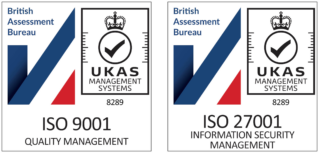Fake identity document statistics – how the landscape changed in 2020

As you may know, at TrustID we are constantly monitoring data gathered across our customer base, to help guard against the ever-present risk of identity fraud and spot any relevant trends.
In this blog, we analyse the data we collected in 2020. The figures are taken from checks we’ve made while providing identity services to clients for Right to Work, Right to Rent, Counter fraud and KYC/AML check processes. Read on to discover which sectors need to be most vigilant against identity document fraud, what types of document are most likely to be falsified and more…
What were the most common forms of fake documents in 2020?
As with previous years, passports formed the largest group of fake documents that we found during checks, followed by ID cards. There were some notable changes though.
- Visas, which made up 12% of fake documents in 2019, constituted only 6% in 2020.
- The proportion of fake passports was roughly unchanged, but fake ID cards were up by 9% from 2019 and 12% from our all-time figure – indicating a possible surge in applicants presenting these to gain employment before the end of the Brexit transition period.
Types of fake documents (2020)
Tip: Extracting and electronically checking security information is the most reliable way to ensure you accept genuine identity documents.
What was the most common nationality on fake ID documents in 2020?
In 2020, we identified fake ID documents purporting to represent 52 different nationalities – up by just one from 2019. France remains the most popular country of origin for fake ID documents, while Portugal and Nigeria have traded places to take second and third position respectively.
Fake French documents were seen by customers across every sector and are among the top 3 most common nationalities in all sectors. Fake Nigerian ID documents, on the other hand, were most commonly presented to our clients in the construction and medical industries, while fake Portuguese documents were most commonly seen by our customers working in general recruitment and umbrella companies.
British documents were fifth on the list of nationalities with most fake British documents being seen by our customers making checks in the housing sector.
Top 10 ‘fake document’ nationalities 2020
 Tip: Screening ID documents from over 50 different countries can be a challenge. Using a Digital Identity Check provider is the surest way to assess whether a document is genuine.
Tip: Screening ID documents from over 50 different countries can be a challenge. Using a Digital Identity Check provider is the surest way to assess whether a document is genuine.
Which sectors were most targeted by identity fraud in 2020?
Not surprisingly, given the situation with the COVID 19 pandemic and subsequent restrictions, we saw a drop in the percentage of fake ID documents presented to our clients in the hospitality sector – from 16.5% of all fakes in 2019 to 10.3% in 2020.
We also saw a slight drop in the proportion of fake IDs seen by clients in the construction sector, but the percentage of fake IDs presented to Umbrella and Screening companies doubled – from 10.3% to 20.6%. As many of the screening checks may have been made on behalf of construction clients, this sector might actually be picking up some of the fake documents previously detected in construction. Even without taking that into account, construction keeps its top place as the sector with the highest percentage of fake identity documents.
The hospitality sector was behind Umbrella businesses as the third most targeted by identity document fraud, followed by the medical and housing sectors.
Top 5 industry sectors 2020
Tip: Every sector is at risk from identity fraud – but for Right to Work checks, those which traditionally have higher staff turnover and lower pay are often the most heavily targeted.
Conclusion
Although 2020 was an unusual year, many of the overall patterns we have seen in identity fraud have remained the same – with France remaining the nationality most frequently cited on fake ID documents, and the construction and technical sectors being most often targeted by fraudsters.
We also saw some changes in the sectors targeted by ID fraud, which seem to relate to the effects of the COVID pandemic. For example, we saw a drop in the number of fake ID documents presented to clients in the hospitality sector, which was severely hit in 2020 by social distancing restrictions. On the other hand, we saw a rise in fake IDs being presented to the medical sector – which has experienced a rapid rise in staff turnover in recent years.
Want to find out more?
If you’d like to discuss how our services could support you, please get in touch. We’d be happy to arrange an online demo.
Sign up to receive updates
Receive notifications from TrustID direct to your inbox. Simply fill out your email address in the form below.
Want to find out more?
We’d be really happy to chat through your requirements and offer advice on the best service for your business.
Tel: 0118 466 0822 or email us.
Request a callback





